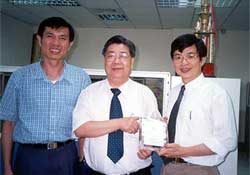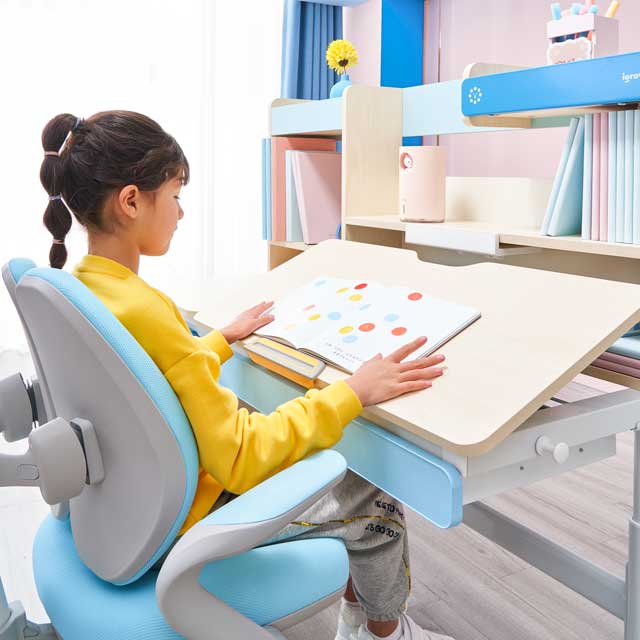The Mainland and Taiwan's accession to the World Trade Organization ("WTO" or WTO) in November 2001 and January 2002, respectively, is bound to have a profound impact on the cooperation and exchanges between the printing and publishing industries on both sides of the Taiwan Strait. What are the opportunities and challenges facing the printing industry in Taiwan? What are the changes in the inherent trade relations between Hong Kong and Taiwan, Hong Kong and the Mainland's peers, following the successive entry of the Mainland and Taiwan into the WTO? The author took this thinking into consideration during the visit to the Taiwan Printing Industry Association in July last year. The impact of the global economic downturn on the printing industry in Taiwan and Hong Kong, how the printing industry responded, and how to achieve transformation and other issues Exchanged. In June of this year, the opportunity to visit the Taipei Computer Show once again visited the Taiwan Printing Industry Association and Taiwan Cultural University. In this visit, the topic naturally turns to the WTO effect of the two sides of the strait.
With the advent of the digital era, the printing industry has inevitably entered the digital era. The emergence of CTP and online publishing has become a prelude to the digital era. How to better master these technologies and let these technologies fully exert their power, so that manufacturers obtain the best economic benefits, will become a topic of concern in the printing industry. In recent years, Taiwan's manufacturing industry has apparently relocated. As a result, the business volume of the printing industry in the island has shrunk dramatically. This has made it difficult for the printing industry to absorb talents. How Taiwan's printing industry has adjusted the cultivation of printing talents at an appropriate time, so the author visited the Chinese University of Culture in Taiwan. Department of Print Communication.
 Photo 1: Mr. Lin He'an presents souvenirs on behalf of the Graphic Arts Society. (From left) Dr. Lin Yufang, Director Lin Hean, and Director Chen Changlang
Photo 1: Mr. Lin He'an presents souvenirs on behalf of the Graphic Arts Society. (From left) Dr. Lin Yufang, Director Lin Hean, and Director Chen Changlang Prof. Li Xingcai, the master of Taiwan's printing industry, and Professor Chen Changlang, director of the Department of Print Communication at the Chinese University of Culture in Taiwan, mentioned: According to the actual development of the printing industry, the Department of Print and Communication of the University of Culture has divided the printing and distribution into publishing design groups. Copying scientific and technological groups and media management groups to expand the field of printing plane media; and at the same time substantially increasing related courses on calculator information, such as: Internet, multimedia, animation, music arrangement and production, electronic publishing, e-commerce, database and other courses , but also strengthened related arts related to design, photography and other disciplines, in order to cultivate a comprehensive printing talents, and better adapt to the printing industry's reform and development. Undoubtedly, the promotion of talent education will lay a solid foundation for cooperation across the Taiwan Strait. In fact, many professionals trained by the Institute of Printing in Taiwan are currently serving in the Pearl River Delta and Yangtze River Delta two major printing bases in mainland China. In addition, the author often maintains good relations with printing colleges such as the School of Journalism and Communication of Wuhan University, the Department of Packaging Engineering of Zhengzhou University, and the Department of Print Communication of the Chinese University of Culture in Taiwan. Through their understanding, the author also attaches great importance to the training of printing talents in the Mainland. The printing institutions in the Mainland are experiencing vigorous growth in these two years. If we can strengthen the exchanges and cooperation between the colleges and universities across the Taiwan Straits, it will undoubtedly lay a solid foundation for the future development of the printing industry in Greater China.

Figure 2: Mr. Lin He'an and graduate students
After China's accession to the WTO, the two sides of the strait can give full play to their respective advantages in order to promote cross-strait printing and publishing cooperation. Taiwan has advanced printing technology and rich management experience. The mainland has a vast market and cheap labor. The printing industry in Taiwan can increase investment in the Mainland and use the cheap labor in the Mainland to occupy part of the mainland market. Mainland enterprises can also cooperate with Taiwanese printing companies in the form of joint ventures, and communicate with each other in technical management and improve together. This is a win-win for both parties. After China's accession to the WTO, the large-scale entry of multinational corporations is inevitable. The Chinese mainland has begun to become a “world factory,†and there are boundless opportunities for printing and packaging. Moreover, mainland enterprises are bound to seek powerful partners to enhance their strength. Therefore, the printing industry in Taiwan can find many opportunities in the Mainland. After many years of development in the printing industry in Taiwan and Hong Kong, it is not easy to achieve today's achievements. At this point, we must look to the printing market in the Mainland and abroad. With its advanced management technology and the cheap human and material resources in the Mainland, RTHK has a certain degree of competitiveness. In particular, the media information industry in the Mainland is still in its infancy and the future market has great potential. Hong Kong and Taiwan printing companies can get ahead of the water, get ahead of the first step, with advanced technology and management to expand the mainland market.
After China's accession to the WTO, the printing industry in the Mainland will maintain its prosperity and sustainable development for a long time to come. At present, there are more than 150,000 printing companies in China with more than 3 million employees. It ranks among the top in the world in terms of total printing industry, but it is relatively backward in terms of per capita consumption of publications and per capita print. The per capita consumption of publications in the Mainland is about US$35, while in Germany it is US$300; ​​per capita consumption of prints is US$10-13, while in Japan it is US$470, in the United States is US$316; per capita annual paper consumption is 26-27 kg in the Mainland. Japan and the United States were 240 kg and 340 kg respectively. With the vigorous development of the Mainland economy, the demand for information and cultural products will surely be promoted. Its huge market potential is the goal that all countries in the world are chasing after.
 Photo 3: Passionate hospitality from friends of the Taiwan Printing Industry Association (from left) Chen Zhengxiong, Zhang Hexiong, Qiu Huayan, Yan Changgeng, Lin Hean, Yuan Ronghua, Huang Yulin, Wei Shangjing, Chen Jinyu, Lin Dejin
Photo 3: Passionate hospitality from friends of the Taiwan Printing Industry Association (from left) Chen Zhengxiong, Zhang Hexiong, Qiu Huayan, Yan Changgeng, Lin Hean, Yuan Ronghua, Huang Yulin, Wei Shangjing, Chen Jinyu, Lin Dejin In addition, in the entire economic landscape of the Mainland, the regional development is extremely uneven. The eastern part is more developed and the western part is relatively backward. The 10 provinces and cities in the west accounted for 56% of the country's total area and the population accounted for 23%. The output value of the printing industry (books, packaging, newspapers, and others) accounted for only 16.3%. There are many preferential policies for encouraging the development of the western region and the local government. The laws governing the publication and printing of mainland culture will gradually be loosened. This is an opportune time for the printing industry in Taiwan to enter the interior.
In recent years, the printing industry in Taiwan has generally been affected by the economic downturn. In addition, the issue of import tariffs on printing machinery, paper, and related materials has caused high production costs and it is difficult to compete with neighboring Hong Kong, Singapore, and South Korea. As Taiwan enters the WTO, this problem will cease to exist. Taiwan's printing industry's first-class high-tech equipment, management, talents, and print quality have limited domestic demand, resulting in excess production capacity. Therefore, business operators only have to find ways to expand into emerging markets such as the Mainland, and they hope to sell printed products to the mainland in order to use the printed products in Taiwan. The advantages of the industry.
The inherent barriers will be gradually broken, and cross-strait three links are only a matter of time. From the perspective of Hong Kong, there are two important messages for China's mainland and Taiwan's accession to the WTO. First, China's accession to the WTO will accelerate the globalization of the world economy. Hong Kong must do its best to maintain its position as an international trade and business center. Second, we must seize the opportunity before us. Hong Kong must not only further develop and consolidate its role as a partner in the Mainland, but also actively develop itself as a partner in the Mainland's ties with Taiwan.
Children's Study Desk and chair set is furniture for children aged 3-18 to learn and write homework. The table has a lot of storage space. The platen is made of solid wood core material. The table board is adjustable, and the table legs can be raised and lowered to meet various needs. A tall child can do homework and draw; the Study Chair is an ergonomic chair that can be adjusted to protect the child's spine. The seat cushion is made of latex, which is very comfortable and will not be tired, so that children can learn healthily and happily.study table and chair, the height of the table and chair can be adjusted according to the height of the child. In addition to the most basic "cushion height" that can be adjusted, the "armrest and back cushions" can also be adjusted according to the child's thigh length and waist height. Adjust so that the child does not sit in the wrong position due to the improper height of the table and chair. And the chair is designed according to children's ergonomics, unlike ordinary chairs that are straight up and down, there is a double-back curve design, which supports the child's back and ensures that the waist and hips fit perfectly with the chair.
Aiguole children's study desk primary school desk can lift the table solid wood writing desk home desk and chair set can help children correct their sitting posture, prevent myopia, and protect the spine!

Study Desk Chair Set,Computer Table For Kids,Kids Art Desk,Modern Kids Table Chair
Igrow Technology Co.,LTD , https://www.igrowdesks.com